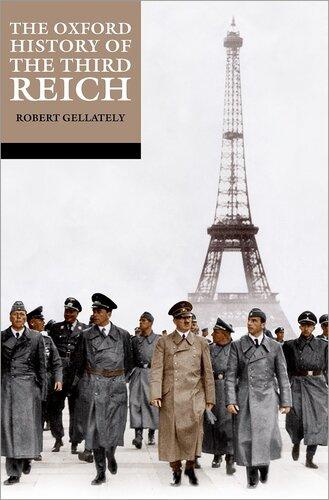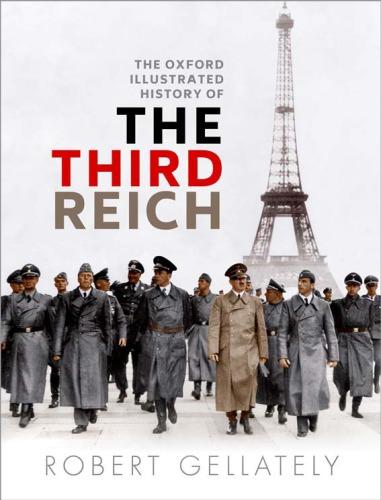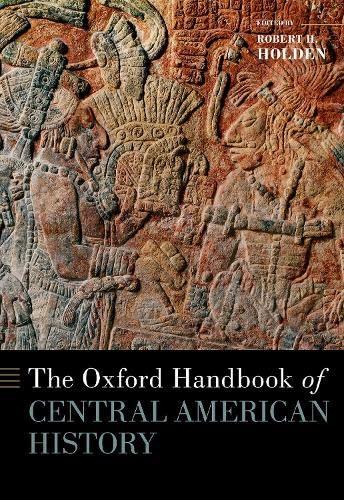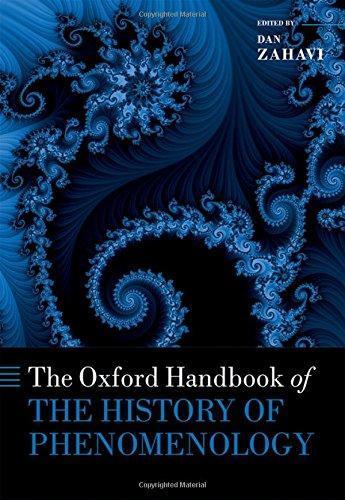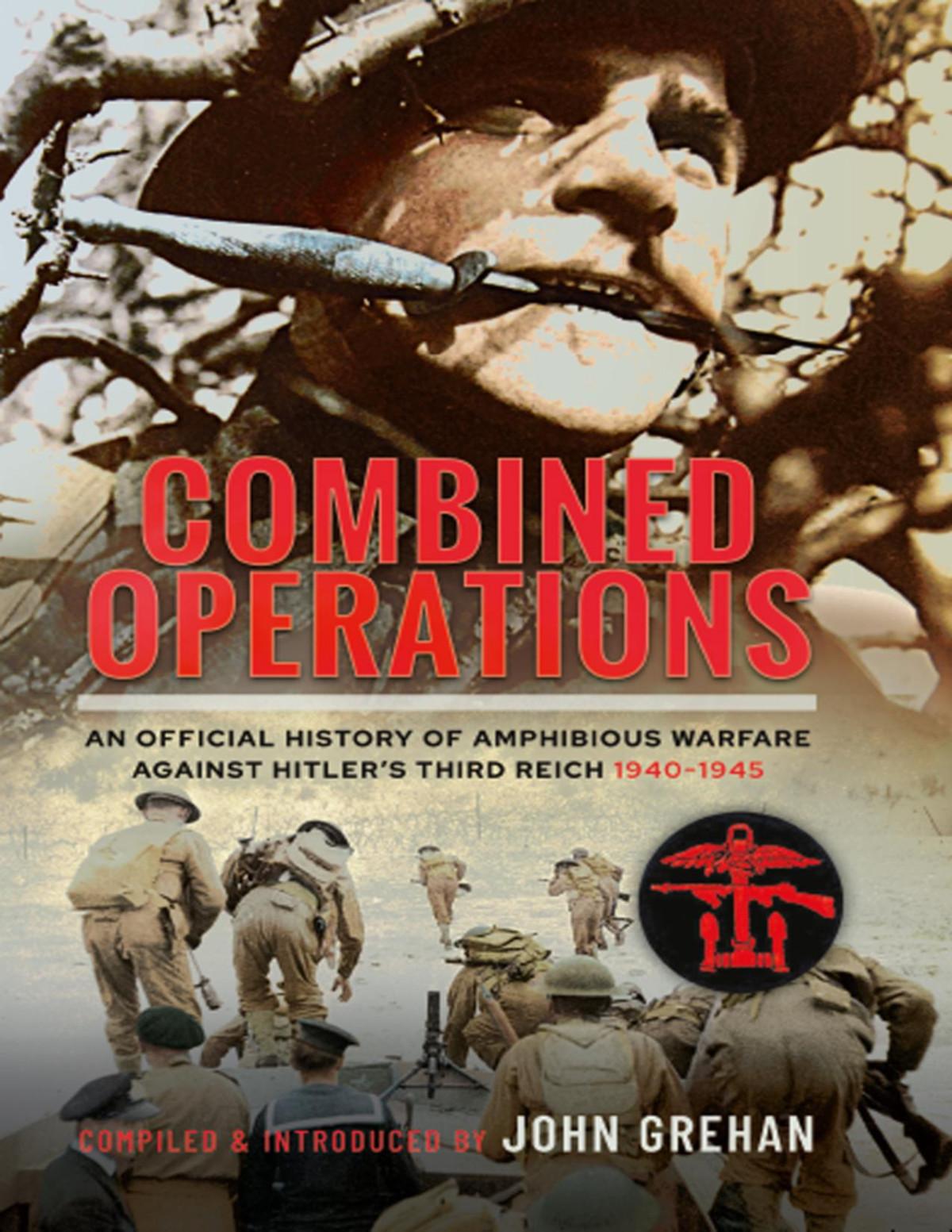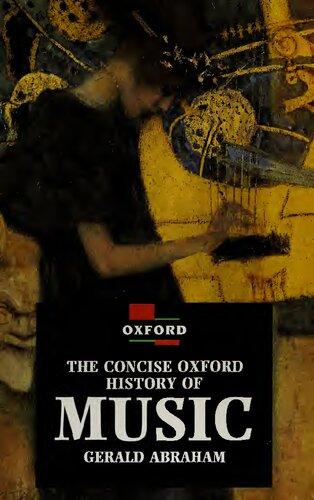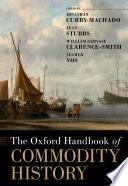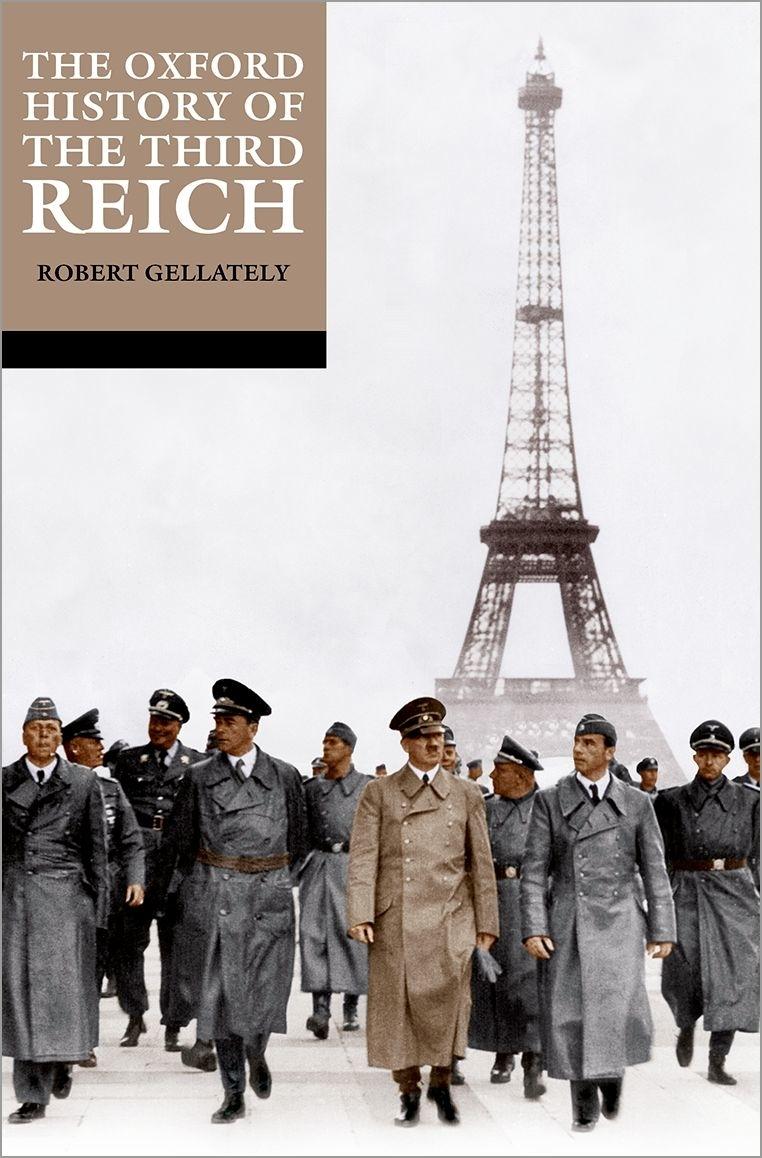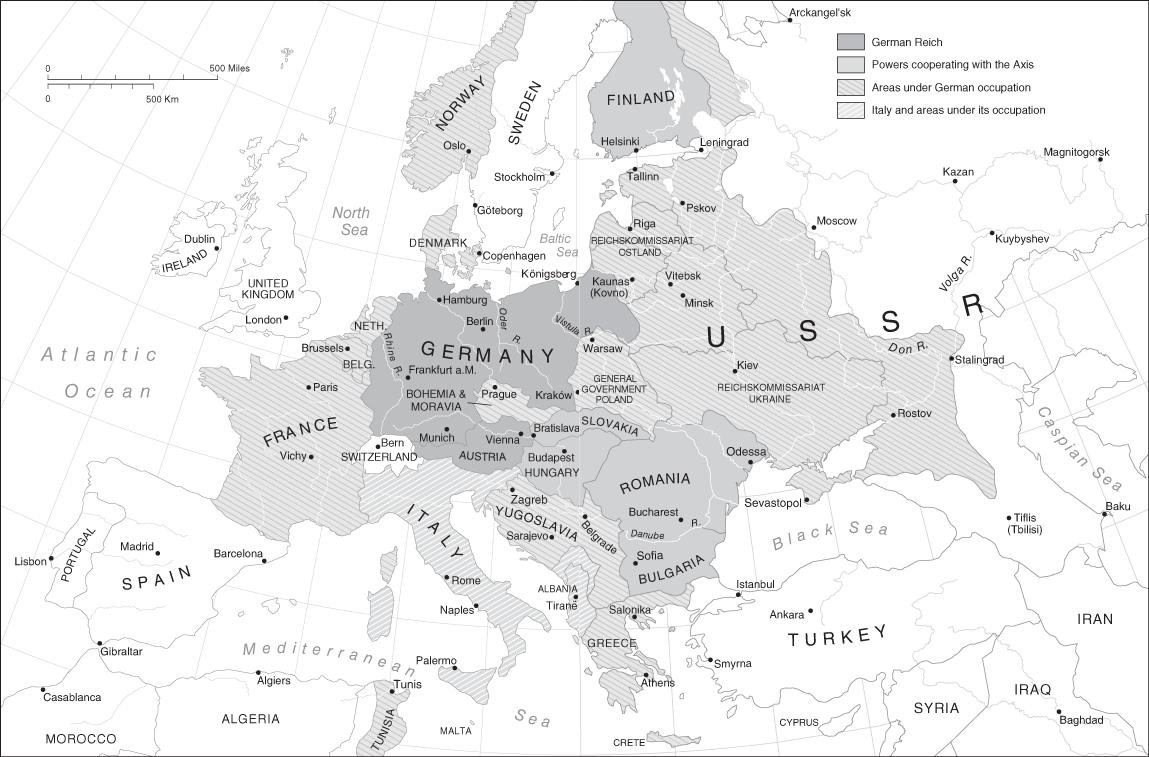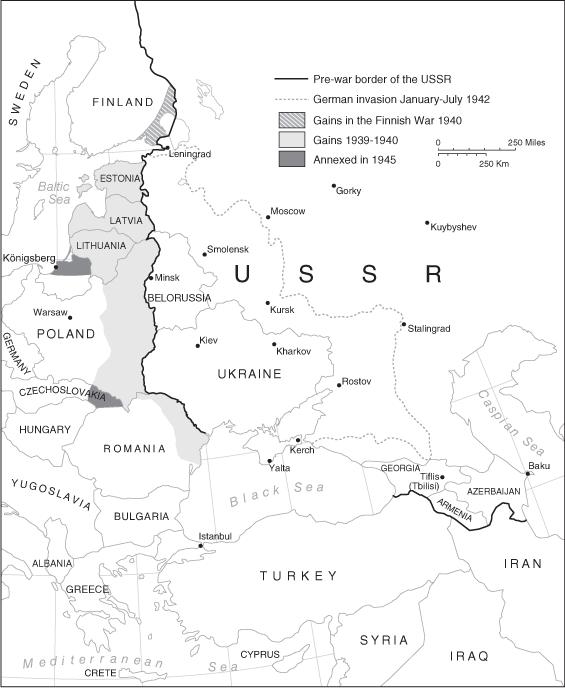Introduction
The Third Reich
RobertGellately
Historians today continue raising questions about the Third Reich, especially because of the unprecedented nature of its crimes, and the military aggression it unleashed across Europe. Much of the inspiration for the catastrophic regime, lasting a mere twelve years, belongs to Adolf Hitler, a virtual non‐entity in political circles before 1914.
He had been born in 1889 and was not even a German citizen. Moreover, during his largely ‘normal’ youth in Austria‐Hungary, he revealed no signs of his future, and by age 20 he was a drifter with little education and socially withdrawn. He had no passionate ambitions save to become an artist of some kind, a vocation for which he had no formal training. He dabbled in painting, vaguely aspired to become a designer of the sets for the operas he adored, yet on that score, he made no progress whatsoever, and in the autumn of 1909, he hit rock bottom when he landed in a Viennese homeless shelter. In February the next year, he left to take residence in a men’s hostel, where he stayed for just over three years, when in May 1913, thanks to receiving a tidy sum of money that was due from his father’s inheritance, ‘the artist’ Adolf Hitler left for Munich, with dreams of becoming an architect. Once more, however, he made few friends, could find no work, and again had to paint postcards to get by. He appeared doomed never to achieve much of anything, given the existing order with its rigid class and political structures that allowed relatively little social mobility. But then the coming of what would be the Great War in 1914 turned the world
upside down. The prospect of fighting for Germany excited this young man’s nationalism, as it did for millions of others in nearly all parts of the globe, and he soon volunteered. The war would have revolutionary consequences, driving out the old orders, and ultimately making it possible even for social outsiders such as him to entertain lofty ambitions.
However, in November 1918, on his return from the war lost by Germany, we have no evidence that Hitler dreamed of becoming some kind of revolutionary leader, and his ambition was the more modest one of staying in the army as long as he could. Like so many in Germany, he was convinced that the Home Front had betrayed the ‘undefeated army’, had stabbed it in the back, and, like millions of others, he would believe in this legend for the rest of his life.
At age 30, he could count practically no accomplishments and he remained a rootless loner, a corporal in the shattered army, with no money and few prospects. However, he soon attracted the attention of officers on the lookout for enlisted men they could train to address the demobilizing troops with nationalist messages. During the brief schooling that followed, Hitler did quite well. In the course of 1920, he helped found a new political entity, the National Socialist German Workers Party (NSDAP), or Nazi Party. He quickly became its leading figure, though the ragtag operation was only one among the dozens like it on the political landscape of the dispirited country.
A little more than twenty years later and astonishingly, in autumn 1941, Adolf Hitler, now 52 years old had become Germany’s unrivalled and worshipped leader, standing at the head of a restored economic powerhouse. Moreover, by mid‐1940, he had rebuilt, armed, and used decisively the newly named Wehrmacht to defeat Poland and more remarkably still, to capture most of western Europe. Then a year later, he had directed his dynamic armies against the Soviet Union, so that in December, the Germans were at the gates of Moscow and Leningrad.
At that moment in late 1941, Hitler appeared—however briefly— to be the most powerful ruler on the planet. He could survey a vast continental empire that included nearly all of Europe from the
English Channel, then north to Norway and east to Leningrad, onward far south into the Caucasus; and in a grand arc southwestwards, to the Balkans, Greece, and parts of North Africa. By now the new Germany, in its quest for more ‘living space’ had shaken the foundations of western civilization to its core, and was in the midst of a mass murder campaign aimed mainly at the Jews across eastern Europe. Before its collapse, the Third Reich’s deeds would turn it into the epitome of evil, and it would leave scars across Europe and beyond that remain visible to this day.
Given this dramatic turn of events, it is little wonder that since 1945 generations of historians keep trying to explain how it all happened. In this book, specialist experts will distil that work, present their own up‐to‐date research, and provide a balanced and accessible account of the era. Each chapter focuses on specific questions and issues, and at the end of the volume, we provide a select list of Suggested Further Readings. The authors show that our understanding of the Third Reich has evolved over the years as we unearthed new materials and documents, adopted new methods and approaches, or studied what happened from different perspectives that give new meaning to the old evidence.
Initially in 1945, Allied lawyers and prosecutors from the west in Germany began investigating the crimes of top Nazi officials as part of the post‐war trials. The emphasis at that time was on a relatively small circle of perpetrators, an approach that early post‐war writers followed, as did Hannah Arendt, driven from Germany before the war. She portrayed National Socialism as a system of ‘total domination’ whose ‘monstrous machine’—manned by lowly characters such as Adolf Eichmann—was responsible for the ‘administrative murder’ of the Jews. This line of argumentation postulated that something like unthinking robots or ‘totalitarian characters’ operated a smoothly running, efficient government killing‐machine. However, as the late David Cesarani pointed out, since the 1960s and 1970s, scholars have discovered that National
Socialist Germany was no ‘totalitarian monolith’. Instead the Third Reich was a multifaceted system of competing and overlapping agencies ‘over which Hitler presided erratically and in which policy emerged as a compromise between powerful individuals and interest groups’.
Another image of the war developed in eastern Europe, where Soviet leader Joseph Stalin’s adaptions of the so‐called agent theory of fascism prevailed. Perhaps its most influential formulation came from Georgi Dimitrov, the head of the Communist International, who said in 1935 that since the Great Depression, certain ‘imperialist circles’ were ‘trying to shift the whole burden of the crisis onto the shoulders of the working people. That is why they need fascism.’ As for the Nazi regime, he concluded that it was ‘the most reactionary variety of fascism’, had nothing in common with socialism, and was more like ‘fiendish chauvinism. It is a government system of political gangsterism, a system of provocation and torture practiced upon the working-class and the revolutionary elements of the peasantry, the petty bourgeoisie and the intelligentsia. It is medieval barbarity and bestiality; it is unbridled aggression in relation to other nations.’
This highly influential condemnation, unfortunately led scholars away from trying to understand that the National Socialists headed a revolutionary movement in its own right, and that it had deep roots in German society. Although ‘capitalists’ had contributed some money to the party on its way to power in 1933, in fact it had been largely self‐funded. After 1933, the new regime crushed the working‐class movement and the trade unions, though it would be a mistake to believe that workers remained immune from the many appeals of the Third Reich.
In the 1980s and outside the Soviet Union, mainly younger scholars began reshaping our understanding of the Third Reich. They started looking at how ordinary people experienced the Nazi era and some of them studied how non‐officials and civilians had participated in the terror system in Germany and across Europe during the occupation years from France to Poland, and beyond. In the last several years, and belatedly, a great deal of work has been
directed at the efforts of the Nazi regime to create a ‘community of the people’, a racially based, exclusive, and harmonious society that Hitler had promised the Germans even before he became chancellor in 1933. This approach, as with previous efforts to write pioneering history, set off stormy and continuing controversies.
In this book, we focus on four overriding and interrelated themes that link together to form a coherent account of the Third Reich.
Hitler’s Role
First, we underline the significance of Adolf Hitler as a charismatic leader, an approach that Ian Kershaw artfully employed in a massive biography that still ranks as the standard work on the topic.
Historian Volker Ullrich, in 2016 and the first major German biography of Hitler since Joachim Fest’s classic account from 1973, uncovers new, or little used, documents to adjust Kershaw’s picture, though he also underlines the importance of Hitler’s charismatic appeal. If such an approach doubtless offers important insights, we should nonetheless be cautious when using the term ‘charisma’. Since the 1980s, when this word began to become popular in everyday language, its meaning has become hopelessly clouded, and it is often taken as a positive attribute or a synonym for anyone or anything possessing exceptional magnetism, great charm, or stunning appeal.
Historians borrowed the concept of charisma, that ‘special gift’, from the famed sociologist Max Weber, who wrote about it long before the Third Reich. Weber said that religious or political leaders in the distant past had exercised ‘charismatic authority’ when their followers regarded them as possessing a ‘divinely conferred power or talent’. During times of distress over the centuries, whether psychological, religious, economic, or political in nature, certain ‘natural’ leaders arose to rule through this unique form of authority. For Weber ‘The mere fact of recognizing the personal mission of a charismatic master establishes his power.’ Thus, when we speak
about Hitler’s charismatic appeal, we need pay particular attention to the content of his messages, so that the real issue is not merely about his supposed magical personality or allegedly captivating blue eyes. We also should examine how people understood his mission, what they thought he stood for, and the extent to which they accepted and identified with some or all of it.
When did Hitler discover he possessed this ‘special gift’? During his youth and in the First World War he exhibited no signs of possessing any extraordinary abilities whatsoever, least of all as a public or political person. If anything, he was generally shy, reclusive, and devoid of any ‘proper’ connections to the governing classes. He had left Vienna for Munich in 1913, perhaps partly to dodge the draft in his native land. Yet in Munich, he thrillingly celebrated the coming of war in August 1914, cheered its announcement, and promptly volunteered to fight for Germany. In the dragged‐out struggle on the Western Front, he won well‐deserved honours, and yet he remained a loner apparently possessing few if any leadership qualities or unwilling to assume the role of an officer. Nevertheless, in his own mind, as early as 1915, he began attaching special meaning to the slaughter he saw at first hand. That year, he began thinking of the struggle in ominous terms, to go by a February letter to a Munich acquaintance. In it, he said that when he and his comrades made it home, he hoped they would ‘find it purer and cleansed of foreignness’. Surely, ‘the daily sacrifices and suffering of hundreds of thousands of us’ would ‘smash Germany’s enemies abroad but also destroy our internal internationalism—that would be worth more than any territorial gains’.
Instead, on his return to Munich in late November 1918, and convinced the Home Front had let down the troops, he found a city riven by revolution, and a right‐wing counter movement already raging against the evil of ‘Jewish Bolshevism’. If it was true that a number of the revolutionary leaders, such as Kurt Eisner and some of his comrades in Munich were Jews in Munich’s revolution of 7 November, two days before Berlin’s, in fact the revolutions across all
of Germany were the product of widespread social discontent with the sacrifices of four years of war.
Hitler wanted nothing more than to remain in an army role, which he managed when officers selected him for training to speak on nationalist matters to demobilizing troops. His superiors also assigned him to monitor political groups in Munich, like the tiny German Workers’ Party (DAP), one of many marginal right-wing and anti‐Semitic parties in the area. He was sufficiently impressed such that only a week after attending one of its meetings in September 1919, he joined up, soon became its star attraction, and in 1920 he helped to transform it into the National Socialist German Workers Party, the NSDAP or Nazi Party. On 31 March 1920, when Germany had been his home for over five and a half years, the 30‐year-old— pushed out of the military or not—took an uncharacteristically bold leap into politics. Socially, psychologically, and politically he began creating a new identity and even a new personality. Soon he could draw 2,000 listeners for one of his speeches, and still more came to hear what he had to say as his reputation spread.
Although a confirmed anti‐Semite since 1919—to go by the only reliable written evidence we have—he soon revealed a radical streak on that score, as indicated privately to Heinrich Heim, a young Munich law student, who became a life‐long confidant. In one of his letters from August 1920, recently found by biographer Volker Ullrich, Heim quotes Hitler as saying, ‘As long as Jews remain with their pernicious effects, Germany cannot convalesce. When it comes to the existence or non‐existence of a people, one cannot draw a line at the lives of blinkered [German] ethnic comrades and even less so at the lives of a hostile, dangerous, foreign tribe.’ Thus, he gave a preview of his ‘redemptive’ version of anti‐Semitism, by which he linked the salvation of his country to ‘pushing out’ the Jews, though what that meant would keep changing.
Meanwhile as the post‐war runaway inflation reached catastrophic proportions in 1923, his messages found an ever more enthusiastic response, at least in Bavaria. For a time, he became the veritable ‘king of Munich’, so much so that in November that year at the peak
of the inflation, he attempted what turned out to be a poorly organized coup. After its ignominious failure, he would make certain never again to be too far ahead of the people, a political view he developed in Mein Kampf, the autobiography he wrote mostly in prison, which revealed how he thought and what he planned. We now know that it is a myth that no one read his book when it appeared in the mid‐1920s, and we also know that Hitler was definitely its author. It remains less certain what role the large work in two volumes had in winning people to the cause.
We should realize, however, that he did not need to convert all the followers, many of whom, like the top Nazi leaders, were already in accord with similar ideas to his, before they laid eyes on him. Perhaps above all, they shared his commitment to the mission of ‘redeeming’ a defeated and broken Germany, a quest that marked the careers of such key figures in the party as Heinrich Himmler, Gregor and Otto Strasser, Ernst Röhm, Hans Frank, Rudolf Hess, and the two Baltic German émigrés Alfred Rosenberg and Max Erwin von Scheubner‐Richter.
In the case of Joseph Goebbels, Germany’s future Propaganda Minister, we have his voluminous diary that provides almost daily clues to his own political awakening. Like the others, he was a product of the psychological and political atmosphere of post‐war disenchantment and aimlessness. Long before he had even heard of Hitler, Goebbels had become pro‐Greater Germany, and ‘anti‐international’, as well as deeply anti‐Semitic a commonplace in those times. He turned away from leftist materialism, though not necessarily against some kind of German socialism.
Although Goebbels was no activist at war’s end, like so many in the country he longed for the return of a ‘great man’, perhaps on the model of the Iron Chancellor Otto von Bismarck or Field Marshal Paul von Hindenburg, the war hero and future president. Goebbels confided to his diary in mid‐1924 that Germany ‘yearns for the One, the Man, as the earth longs for rain in summer’. For a short time, he thought he himself might be that man (others did as well), at least until he heard Hitler speaking for the first time on 12 July 1925.
Goebbels’s response was to stand outside ‘and cry like a baby. Away from other people.’ Later he noted of the experience, that it was like a ‘resurrection. What a voice. What gestures, what passion. JustasI wished him to be.’ The emphasis is added here, because it almost seems as if Hitler was Goebbels’s psychological projection, his own dream fulfilled. On finishing the first volume of Mein Kampf, Goebbels still had questions, though semi‐worshipful ones about its author: ‘Who is this man? Half‐plebian, half‐god! Is this really Christ or just John the Baptist?’
After Hitler’s release from prison in late 1924, he began his political work almost from scratch, and together with a handful of loyalists, soon refined the Nazi Party machine. Nevertheless, it was an uphill battle until another major social calamity visited the country in the guise of the Great Depression in 1929. More than anything it was this economic chaos and mass joblessness that made people psychologically ready to receive the Nazi message, and to see hope in Hitler’s vague promises. The great breakthrough came in the national elections in 1930, the first vote since the stock market crash. Overnight, the ‘marginal’ Nazi Party, with an army of militant true believers, became a power with which all others had to contend. Early the next year, in a private missive, Hitler was again declaring himself a prophet—one of his favourite poses—now claiming to predict ‘with near oracular certainty’, that he would have power within two and a half to three years. This time he was right. After he was appointed chancellor in January 1933, a concerted official effort was made to convey the new national leader as if God‐sent to fulfil a sacred calling. Soon the great majority would embrace the mission he articulated and thus implicitly accept his right to act based on charismatic authority. Max Weber sagely noted, however, that this authority’s revolutionary core begins to diminish if it becomes routine. Hitler instinctively grasped what this quandary entailed in ruling, so that from his first days in power, and to an extent even before, he worked against the grain and avoided bureaucratic tasks. Perhaps he was simply indolent, though no doubt, he recognized how even holding cabinet meetings (which
soon stopped) would erode his personal appeal, and he would cease to appear as divinely ordained and above politics as usual.
Although self‐taught and a voracious reader, he claimed to intimates that he liked to learn also by speaking with them privately about their views, such as on how to organize the economy and society. Already, however, he preferred those around him to hail him as the Führer (not Chancellor) to symbolize his identification with a people’s movement and to reinforce his standing as not just another politician.
Yet even on the road to power, the National Socialists did not need to invent many of the sentiments on which they built. There already existed strong anti‐Weimar feelings, along with the deep conviction of the injustice of the Versailles Peace, anti‐Semitism, and anti‐Bolshevism. At the end of March 1933, Elisabeth Gebensleben, a mother (born 1883) and a passionate female party member in Brunswick, while enthralled by Hitler and overjoyed with his recent victory at the polls, noted that only then did the communists burn their red flags and seek to join her movement. ‘Of course that is impossible’, she wrote to her married daughter in Holland; ‘first, they will have to make it through a three‐year test‐period in a concentration camp. The same for the Social Democrats.’
Hitler went on to exercise enormous influence throughout the years of the Third Reich, and right to the bitter end. Felix Römer, a young German historian, has summed up the man’s appeal for the German prisoners of war (POWs) in Allied captivity who he studied in an insightful book, still not available in translation. Römer concludes that ‘in the eyes of these men the Führer embodied all that was positive and attractive about National Socialism’, while they attributed all negativities to those in his immediate entourage, blamed other authorities, ‘or conveniently explained them away’. The avowals of loyalty of the men in captivity cut across old religious, class, and political lines, and to the extent that any prisoners now claimed to reject Hitler and Nazism, they tended to belong to older oppositional clusters. The ‘community of the people’, at least in a psychological sense, persisted inside the Wehrmacht in captivity,
even after June 1944, when it should have been obvious that defeat was inevitable.
The Dictatorship’s Use of Plebiscites and Elections
The second theme we explore in the book is the related notion of Hitler’s regime as a curious mixture of dictatorship and appeals to the public via plebiscites and elections, a system we can label one of plebiscitary dictatorship. In Mein Kampf, he said he wanted an authoritarian regime, backed by the people, and once in power, to demonstrate that support he could use elections or the plebiscites permitted by the Weimar constitution. Nor was he alone among dictators in wanting to put all kind of issues to the vote. However, partly because the Nazis overwhelmingly won these exercises during the first six years, many people at the time and scholars ever since, doubted the validity of the results. But were these events and the plebiscites all fixed and terror‐filled? Although historians commonly insist that they were, recent investigations show otherwise, as we do in this book. In fact, the government or the Nazi Party stepped in when local Nazis took obviously illegal measures to hinder or change the vote, because Berlin did not want outside observers to cast doubt on the overwhelmingly positive results.
Members of the Social Democratic Party underground, and Nazism’s sworn enemies wrote in their secret reports that ‘the fascists’ had already made enormous gains. In November 1933, when the Nazis took 90 per cent of the vote in a plebiscite and 87.9 per cent in simultaneous national elections, the socialists wrote that ‘critical foreigners’ were tempted to assume these outcomes were obtained by ‘force or terror’. Alas, the socialists despairingly had to admit that such views misperceived ‘the real and profound influence fascist ideology has upon all classes of German society’. The underground report concluded with grudging acknowledgement that generally the results were ‘a true reflection of the mood of the population’, and the turnout in favour of Nazism indicated ‘an
extraordinarily rapid and effective process by which society was becoming fascist’.
In 1936, to take another example, Hitler was already bathed in a popular applause too obvious to ignore, thanks to the first steps to restore the economy and ‘good order’. That success was undoubtedly reflected in the positive results of the Saar plebiscite (January 1935), allowed by the Versailles Treaty of 1919. Another election to the Reichstag on 29 March 1936 took place as a plebiscite supposedly authorizing Hitler to remilitarize the Rhineland—a bold step he had already taken. That move flaunted certain stipulations in the same, much‐hated Versailles Treaty, and here the regime managed an astounding 98.8 per cent of the votes. Although the underground socialists usually emphasized disagreement and discord in their accounts of people’s attitudes to the Nazi regime, on 17 March 1936 their observer in Munich had to admit, after witnessing a parade there of the newly named Wehrmacht, that ‘the enthusiasm was enormous. The whole of Munich was on its feet.’ He added, as if in reply to comrades—and future historians—who point to Nazi terror for explaining the evident consensus behind Hitler’s regime: ‘People can be forced to sing, but they cannot be forced to sing with such enthusiasm.’ The reporter had experienced the heady nationalist enthusiasm at the outbreak of war in 1914, and now he could only say, ‘That the declaration of war [back then] did not have the same impact on me as the reception of Hitler on 17 March.’ The leader had ‘won popularity’ and ‘is loved by many’.
Why did Hitler need elections? In fact, he had no use for them as such, though he and Joseph Goebbels took them very seriously because, as the Propaganda Minister put it in an interview in 1933, the regime wanted to show the world that the entire nation stood behind the regime’s legislation. Thereby, the government would demonstrate the unity of the people and their leader. If there was doubtlessly some coercion or moral suasion from the neighbourhood or the party to get out and vote, observers like the Socialist Party underground at the time did not think that terror was always involved.
How could the nation get on side so quickly? German scholars after 1945, partly for psychological reasons, shied away from the obvious fact that for a time most of the nation had supported Nazism. Indeed, so many people joined the party or one of its affiliated organizations that the membership eventually included practically everyone in the country. After the war, many scholars emphasized the repressive character of the regime and its unprecedented crimes, while at the same time these academics put aside questions as to the social support the regime had enjoyed. However, after several generations of research and writing, we have now reached quite different conclusions. As Ulrich Herbert, one of Germany’s leading historians, suggested recently, during the era of the Third Reich—with the obvious exception of its last months— perhaps 95 per cent of the German population ‘lived relatively securely and fairly undisturbed under the Nazi regime’, and this great majority was ‘never even remotely endangered by state repression’.
Nazism’s Social Vision
The third theme that runs through this book pertains to the ‘community of the people’, a concept that was in the air in the 1920s and even earlier, and which the Nazis made their own. Given that Hitler’s version would exclude Jews and many others deemed ‘racially inferior’, medically unfit, or politically suspect, how seriously did anyone take this highly touted social vision?
In 1934, several hundred members of the Nazi Party submitted essays in a famous contest sponsored by Theodore Abel, a Columbia University professor. He promised prizes based on the best autobiography, and particularly for an account of what had led them to Hitler and the party. Most underlined that they wanted a ‘community of the people’ in which class conflict would end and there would be a ‘return’ to social harmony. A significant minority said they also wanted the Jews and other foreigners pushed out. Others went over to the party primarily by their attraction to Hitler and his (surprisingly vague) promises of change. Having read many
of the essays myself, now held at the Hoover Institution on the campus of Stanford University, I certainly agree with Abel’s conclusions. Perhaps the writers, consciously or not, toned down their anti‐Semitism, given that they were writing for an American professor, but that prejudice comes through indirectly, in numerous ways.
Today historians debate the extent to which the regime created the much‐heralded ‘community of the people’. Although some are convinced that such a mythical community never existed, and amounted to little more than a cheap propaganda device, simply dismissing the idea of ‘community’ is too easy. It was precisely this element of Nazi ideology that dictated the structure of the promised utopia. True enough, there was never a serious attempt to bring social equality to all, because only the racially pure were valued, anyone who did not fit would be excluded, and real class differences persisted. Nevertheless, the select majority enjoyed a social‐psychological sense of belonging to a special racial community.
The regime sought to pave the way for the many to enjoy the luxuries and pleasures that until then had been open only to the social elite. Hence, Hitler promised a people’s car, the Volkswagen, and millions deposited five Reich marks per week ‘to become car owners in four years’.
Although customers had to pay well in advance and collected no interest, tens of thousands soon signed up, though none of them ever got the finished product. Nevertheless, historian Hartmut Berghoff underlines the significance of their ‘virtual consumption’, that is, while ‘racial comrades’ did not get their own car or house as promised, the publicity campaigns surrounding these and other dreams allowed them a measure of consumer satisfaction. They could envision driving down the new autobahn in their own car. In addition, for the first time in history, the German government showed real concern for ordinary people, sponsored crusades to clean up and beautify the workplace, as well as small towns and villages, and these efforts impressed many erstwhile doubters. Opportunities existed for them to enjoy opera, or to contemplate
vacations to foreign lands on cruise ships, pastimes until then reserved for only the well‐to‐do. Visits to the cinema multiplied many times over, as did excursions to art galleries, the symphony, operas, and exhibitions. Then there were festivals like ‘the day of German art’, during which there were parades of floats bedecked with historical characters from the German past, which made National Socialist ideology visible in ways meant to appeal. Besides trying to win over the workers, the new regime reached out to engage all of society, including the often‐ignored peasantry. A special ‘Harvest Festival’, introduced in September 1933, built on old traditions. It brought hundreds of thousands together at Bückeberg in Lower Saxony, and in addition localities across the country celebrated the event as well.
Of course, the underlying reason that so many turned in favour of Hitler and National Socialism was that the regime ended unemployment, though even that did not happen overnight. Nor did work creation projects help all that much, because rearmament did far more to overcome joblessness. Economic historians provide various estimates for military expenditures, though all agree on the enormous increase from the first year of Hitler’s rule down to the outbreak of the war. Hans‐Ulrich Wehler suggests that military spending went from 4 per cent of the national budget in 1933 up to 58 per cent in 1938. This massive infusion of capital additionally created good jobs and some communities prospered as never before. Moreover, with the reintroduction of the military draft in March 1935, ever‐larger numbers of young men went into the armed forces. Whereas until that year the number serving in the military was limited to 200,000, by August 1936 a new armaments plan called for the wartime strength of the army to reach 4,620,000 by 1 October 1939. By comparison, the numbers employed in constructing the highly touted autobahn were modest, going from 4,000 in December 1933, increasing slowly and only topping 100,000 for the first time in May 1935.
If beating the Great Depression was a long struggle, Germany eventually succeeded. No doubt Hitler bolstered the effort by
exuding confidence and setting a new psychological tone. Being part of this ‘community of the people’ came with its rewards. Even members of the working‐class parties who had been the strongest opponents of Nazism prior to 1933 came, if reluctantly, to accept that the economy was improving. In fact, Volker Ullrich has shown that a majority of workers, like other social groups, changed their negative opinion of Nazism and Hitler with remarkable ease and sometimes overnight. One contemporary looking back recalled fondly, ‘Suddenly everything seemed possible.’
This is not to say that terror had ceased completely after the excesses in early 1933. However, this terror was not random, for it aimed overwhelmingly at those already feared, like recidivist criminals; or the despised, as were the vagabonds, Gypsies, and ‘others’. There were special campaigns to clean up the streets from prostitutes, pimps, and pornography. The greatly empowered police also enforced more rigorously the laws already on the books against homosexual acts, while new laws made it possible to sterilize anyone deemed to be racially or physically ‘defective’. In addition, the notorious ‘Gestapo methods’ were no post‐war invention, though they were used selectively, above all to crack the underground communist movement and later in 1944–5, to track down pockets of resistance and crime. Although it is difficult to generalize about how ‘good citizens’ reacted to these developments, there is evidence to suggest that many welcomed the crackdown in the name of ‘law and order’. When asked recently about these kinds of crimes, one grandmother said simply ‘We did not worry about them.’ If later on her Jewish friends or acquaintances simply disappeared, she said, ‘But that was just how things were, we did not ask any questions, perhaps we were scared.’
War and Empire
The fourthandfinalthemein the book pertains to war and the Nazi empire. In Hitler’s view, fostering the economy and building a ‘community of the people’ were not ends in themselves, as much as
they were prerequisites to fulfilling his expansive plans on the foreign policy front. During his first years in power, even small, bloodless diplomatic victories or his speeches pleading for peace, made him more popular, while at the same time he grew more confident and assertive. Those who had known him during the 1920s hardly recognized him by the late 1930s when they saw him again.
The broadly shared dream among the German elite was that once they created a ‘harmonious’ and conflict‐free society at home, the country would be in a position to break out of what nearly all Germans deemed to be an unjust post‐war peace settlement that the victors imposed on them in 1919. Hitler and those around him wanted much more, including the defeat of the external enemies and then the seizure of Lebensraum in the east. In these vast lands, reaching into Ukraine, perhaps to Moscow and even to the Ural Mountains, the conquerors would establish a new order, a Germanic utopia for the ‘master race’. New settlers would then push out the nations already there, enslave or even murder them.
The easy first attainments, which Hitler chalked up in foreign policy, encouraged this brutal vision of Lebensraum in the east. On top of that, ceaseless propaganda infected many in the Nazi Party well down the line. Apart from the leader, others in the hierarchy dreamed of a grand empire, and their plans, along with those of the academic experts and the Schutzstaffel (SS), called for nothing less than the deliberate starvation of millions. Today, these visions and others, such as those that were part of the General Plan East, read like tales of horror, replete with wars of conquest, plunder, and enslavement on into the future until perhaps a showdown with the United States. Outlandishly, the ambitions grew in scale even after Germany began losing the war.
Moreover, it was in the context of creating a Germanic empire that the regime set about the truly monstrous undertaking of murdering all of Europe’s Jews. Although many in the Nazi hierarchy had entertained murderous thoughts about the Jews for years, most
historians insist that the decision or decisions for the ‘final solution’ came only after war began with the Soviet Union in June 1941.
Back in 1933, Jews in Germany had been well integrated and thus slow to accept how fundamentally their lives would change when the Nazis came to power. The Jews were a small minority in the country, and though they made up less than 1 per cent of the population, they stood out in the larger cities, and a strand of German public opinion resented them even before the Nazis made anti‐Semitism more popular. It did not matter that the Jews had lived in these lands for over 1,000 years, or that in the new Germany founded in 1871 they had obtained equal rights under the law, and enjoyed more opportunities for social advancement than almost anywhere on earth.
For Hitler and the Nazi Party, reversing those rights and forcing the Jews out was a top priority. However, most citizens did not take anti‐Semitism nearly as seriously. Thus, in April 1933, an officially sponsored boycott of Jewish businesses and professionals was a propaganda flop. Nevertheless, Hitler whispered to the Italian ambassador Vittorio Cerutti that he wanted far more than such a boycott, and he appallingly predicted, ‘That in 500 or 600 years the name Hitler will be universally glorified as the name of the man who, once and for all, eradicated the global pestilence that is Jewry.’ Indeed, his anti‐Semitism would grow more virulent by the year.
Official and informal discrimination slowly escalated as Hitler gained popular support and more freedom of action from international pressure, especially in September 1938 when Germany obtained the Sudetenland at Czechoslovakia’s expense. Just over a month later in November, the Nazis unleashed one of the worst pogroms in the nation’s long history in the outrageous ‘night of broken glass’, or Reichskristallnacht. Thereafter, the Jews had to sell off their properties at bargain basement prices in the so‐called Aryanization campaign, the state‐sponsored robbery that spread everywhere the Germans went in the war years.
With the conquest of Poland in September 1939, the Third Reich found itself faced with millions of Jews, and uncertain about what
should happen to them. As soon as the war against the Soviet Union began in June 1941, special task forces began shooting thousands of Jews in the east and forcing millions into ghettos. On 10 July, during an evening in the Führer’s bunker, one of his adjutants, Walter Hewel recorded a particularly horrific statement, when he quoted Hitler as saying: ‘I feel like the Robert Koch [1843–1910] in politics. He discovered the bacillus and pointed medical science in new directions. I discovered the Jews as the bacillus and the ferment of all social decomposition.’ Such thinking rationalized the murderous acts already under way, for by then the special task forces were shooting not just male Jews, but also females and children.
Hitler crossed an important line in September 1941, when he decided on the deportation of all the Jews remaining in Germany (the Altreich). Indeed, by the last week in October, to follow Christopher Browning’s conclusion, ‘the close circle around Hitler, and gradually others as well, knew what Hitler expected of them and in what general direction they planned to proceed’. By early November, construction began on the first death camps, whose sole purpose was to produce death, and that development, among others, suggests that shortly before he had given an order, or uttered a wish, to kill all the Jews in Europe as far as his armies could reach. On the other hand, in recent years, historians point to an important meeting of Nazi leaders on 12 December 1941, the day after Hitler—in a step not called for by the treaty with Japan—had declared war on the United States. Finally on that date a World War had arrived, a moment when Hitler first ‘prophesized’ (on 30 January 1939) what would happen to the Jews. The result, he had said, would not be ‘the Bolshevization of the earth, and thus the victory of Jewry, but the annihilation of the Jewish race in Europe!’
Apart from continuing arguments among historians as to the date or dates of a possible Hitler order or decision for the Holocaust, recent studies underline the role of ‘ordinary’ Germans, that is, men (and some women) who were not in the party or the SS, who volunteered to serve in police battalions, and soon found themselves in the killing fields. Millions in the Wehrmacht not only saw the
